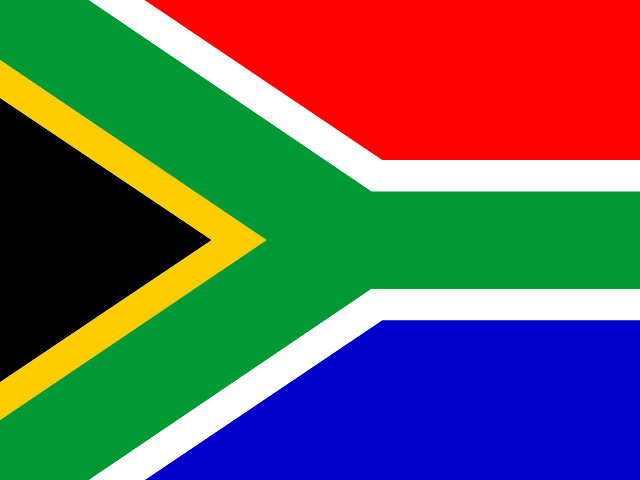
South Africa
The last year has been a challenging one for South African media, including the closing of two news sites, staff of a prominent media company not having their salaries paid in full, and high-profile legal challenges involving journalism that reflect fault lines in media freedom. Perhaps related to this is that, after four years of growth, trust in news in South Africa is declining.
Due to the termination of its licensing agreement, finance news site Business Insider South Africa closed after five years of operating, although its staff were reallocated into its parent organisation, Media24. More troublingly, left-leaning news outlet New Frame, which provided a much-needed voice on social justice and labour issues, also closed down amid recriminations and accusations of political interference and mismanagement, leaving some 25 staff out of work and a significant hole in the diversity of the news landscape.1
In March 2023 Independent Media, owners of a number of leading national newspapers and the popular IOL website, told staff that they would only receive 75% of their salaries, which the company attributed to ‘declining revenues and rising cost structures’. Commentators suggested this was more likely caused by the parent company taking a financial hit when they lost a court case with the state asset manager. Salaries were eventually paid in full, with shareholders agreeing to provide a capital injection, but this is an ominous harbinger of potential cuts to come.
In February 2023 the president of South Africa was taken to court over his failure to appoint a new board for the South African Broadcasting Corporation (SABC). NGO Media Monitoring Africa and others argued that the absence of effective oversight jeopardises the SABC’s stability and has left millions of people under threat of having their ‘fundamental right to access to information’ denied. The president eventually appointed a board in mid-April. The results of the 2023 Digital News Report survey highlight the scale of this threat, with the SABC as the top news source for TV and radio news (52%), and second highest on the online list (50%).
In a case that the Committee to Protect Journalists says could have ‘serious repercussions for freedom of the press in South Africa’, ex-President Jacob Zuma sued an investigative journalist from News 24 and an advocate who Zuma claimed leaked confidential medical records. The private prosecution was widely seen as an attempt by Zuma to stop the journalist, Karyn Maughan, from reporting on his ongoing trial about corruption related to a multi-billion-dollar arms deal, with possible ramifications mooted that included damage to South Africa’s open justice system and the role reporters can play in defending it. In a victory for media freedom, the court ruled in Maughan’s favour, saying that Zuma’s prosecution “had the hallmarks of a Slapp suit, designed to harass and intimidate.”.2
Harassment of journalists has become increasingly physical, with SANEF expressing concern at ‘increasing incidents of violence against journalists around the country’.3 In February, supporters of a political party and municipal police assaulted a reporter from the private broadcaster eNCA and, in a separate incident, a former mayor and his bodyguards attacked a reporter with the privately owned newspaper Zululand Observer.
Harassment of the media, both online and physically, is disproportionately directed at women journalists. This bias is reflected in the decreasing number of women editors in South Africa, which has dropped precipitously from a global high of 60% in 2021 to a paltry 20% in 2023.4
Print continues to decline as a source of news and TV news is also down after COVID-19 highs. Conversely, the number of people using social media for news has grown across all platforms except for Twitter, with news use via TikTok and YouTube both increasing by 7 percentage points.
There are positive indicators, though. News sites are increasingly embracing the opportunities that platforms bring to reach new audiences. Subscriber numbers to paywalled and membership-based news sites appear to be growing, although it is difficult to find reported figures for many of them. Of those that have declared their figures, News24 is at around 75,000 subscribers, a growth of 53% year-on-year, another Media24 site, the niche Afrikaans-language Netwerk24, had over 95,500 subscribers as of September 2022, and independent news site Daily Maverick’s membership scheme has 22,500 active members. Although trust in news has dipped in general, there is still a robust, trusted relationship between reputable news sites and their audiences.
Chris Roper
Deputy CEO, Code for Africa
Methodology note
These data are based on a survey of English-speaking, online news users in South Africa – an important part of a larger, more diverse, media market. Respondents are generally more affluent, younger, have higher levels of formal education, and are more likely to live in cities than the wider South African population. Findings should not be taken to be nationally representative.
Trust in news overall
57%
(=) 4/46
Trust in news I use
60%
Trust in news (57%) remains high by international standards despite a 4pp decline in the last year. Brand trust scores have also edged slightly lower with News24 and BBC News remaining among the most trusted news organisations. South Africa has a well-established culture of fearless journalism but some elements have been compromised in recent years by a chase for ratings and, in some cases, perceptions of undue influence by powerful owners.
RSF World Press Freedom Index
25/180
Score 78.6
Measure of press freedom from NGO Reporters Without Borders based on expert assessment. More at rsf.org
Share news via social, messaging or email
57%
Footnotes
1 Daily Maverick, 15 July 2022.
2 Slapp suit: Media freedom vindicated in Zuma private prosecution verdict, Daily Maverick, 7 June 2023.
4 See our own factsheeet.

